Mao Zedongs former Residence
Comrade Mao Zedong's former residence is located in Shaoshan Village, Shaoshan Township, Shaoshan City, Hunan Province. It is located in the South and north of Shaoshan Village. It belongs to the "concave" type building of civil structure, with Mao Zedong's family in the east, neighbors in the West and shared hall houses in the middle. The total building area is 472.92 square meters. The main attractions are Mao Zedong's former residence, Bronze Statue Square and drip hole. In 1929, the former residence was confiscated and destroyed by the Kuomintang government. In 1950, it was restored to its original appearance. In 1961, it was promulgated by the State Council of the People's Republic of China as a national key cultural relics protection unit. On June 27, 1983, Deng Xiaoping inscribed "Comrade Mao Zedong's Former Residence" on the front plaque. In July 1997, it was selected as the first national patriotic education base of the Ministry of Propaganda.
In December 2016, Comrade Mao Zedong's former residence was listed in the National Red Tourism Classic Scenic Spots List.
geographical position
Shaoshan, Hunan Province, is located at the junction of Xiangxiang, Ningxiang and Xiangtan, 40 kilometers away from Xiangtan City, 120 kilometers away from Changsha City, with a population of 100,000. According to legend, when Emperor Shun visited this place in the south, he saw the beautiful scenery, played Shao music, drew Phoenix to the instrument, birds and song, and also said, "Shao's three daughters have learned from this, there are Phoenix titles to Tianshu, the daughters are all immortals." So Shaoshan got its name. Now it belongs to Xiangtan City. Shaoshan Administration Bureau of Hunan Province. Mao Zedong's former residence is located in Shaoshanchong, 104 kilometers away from Changsha City, also known as Shangwuchang, which is located in Maolin Xiuzhu, green mountain Chong.
There are many works of art reflecting the superior geographical position and beautiful natural environment of Mao Zedong's former residence. The series "Mao Zedong's former residence", which is the first national artist, the first person to paint the former residence of Chinese celebrities, and the famous painter Mr. Thumb, is most praised by the public and the media.
Historical evolution
Mao Zedong was born here on December 26, 1893, and lived here for 17 years.
In the autumn of 1910, Mao Zedong went out to study with great ambition to save the country and the people.
In the spring of 1921, Mao Zedong returned here to educate his family to join the revolution.
In 1925 and 1927, Mao Zedong returned home to lead the peasant movement, where he held various small-scale meetings and established the Shaoshan branch of the Communist Party of China.
In May 1950, Mao Anying, Mao Zedong's eldest son, returned to Shaoshan to visit his countrymen and visit Mao Zedong's former residence.
On September 20, 1950, Mao Zedong wrote to Huang Kecheng about the construction of a house (instead of Mao Zedong's former residence) in his hometown by the Changsha Prefectural Committee and the Xiangtan County Committee and the construction of a highway: "If it is true, please ask them to stop immediately and never build it, so as not to cause adverse effects on the people."
On February 6, 1951, Mao Zedong's former residence was officially opened to the outside world. On the front door of the hall, the preface reads "The Home of Chairman Mao, the Great Leader of the Chinese People". At the beginning of 1954, he revised the book "Comrade Mao Zedong's former residence".
On June 25, 1959, Mao Zedong returned to Shaoshan and stayed at No. 1 Building of Songshan, Shaoshan Hostel. On the 26th, visiting parents'burial tombs, provincial visits to former residences, visiting Shaoshan schools and Shaoshan People's Commune, visiting Shaoshan Reservoir, feasting family members of martyrs and old underground Party members, self-defense members and relatives and friends, and holding talks, investigating farmers' production and living conditions, and filling in "Seven Laws to Shaoshan". He left Shaoshan on the afternoon of the 27th.
On March 4, 1961, the State Council declared Comrade Mao Zedong's former residence in Shaoshan as a national key cultural relic protection unit.
From June 17 to 28, 1966, Mao Zedong returned to Shaoshan and lived in the first building of the Dripping Tunnel.
In November 1966, the number of visitors to Shaoshan increased sharply during the Cultural Revolution, averaging more than 30,000 people a day. Since the middle of the year, Mao Zedong's former residence and Shaoshan Exhibition Hall have been open day and night.
On December 20, 1993, the unveiling ceremony of Mao Zedong bronze statue was held. Comrade Jiang Zemin came to Shaoshan to unveil Mao Zedong bronze statue.
In July 1997, it was selected as the first national patriotic education base of the Ministry of Propaganda.
In December 2004, Mao Zedong's former residence underwent the largest closed maintenance.
Main attractions
Bronze Statue Square
A bronze statue of Chairman Mao Zedong, the great leader of the Chinese people and a great man of a generation, stands in Shaoshan Chong Square. Backed by Shaofeng, it is the center of Shaoshanchong. It is very close to Chairman's former residence, Mao's ancestral temple and Comrade Mao Zedong Memorial Hall in Shaoshan.
The bronze statue of the President was designed according to the image of the President at the National Ceremony. It is situated in the southwest and facing the northeast. The President has a great body. He holds a book in both hands and wears a Zhongshan suit. His eyes are bright with a smile and a bright look. The bronze statue is 6 meters high, the red granite base is 4.1 meters high, the total height is 10.1 meters, and the weight of the bronze statue is 3.7 tons. On the pedestal, the five big characters of Comrade Mao Zedong written by General Secretary Jiang Zemin sparkled with gold. Chairman's Bronze Statue Square is very magnificent, planted with pine and cypress, while flower beds are planted with holly, camellia, rose and other flowers.
The total area of the square is 102800 square meters. Among them, there are 1500 square meters in the admiration area, 1700 square meters in the memorial area, 6300 square meters in the assembly area and 93300 square meters in the leisure area (including the area of the admiration avenue: 183 m long (implying the chairman's height is 1.83 m) * 12.26 m wide (implying that December 26 is the chairman's birthday) = 2244 square meters and 20 mu of farmland). The total investment of the square is 66 million yuan.
On December 20, 1993, General Secretary Jiang Zemin came to Shaoshan to unveil the bronze statue of Mao Zedong. Immediately, the square in front of the bronze statue of the President became a world of flowers and a sea of people. Nowadays, it is the most attractive scenic spot in Shaoshan, where people look up to the magnificence of great men, take pictures, and feel the proud demeanor of a generation of great men and the tremendous strength of never-ending.
Drip hole
Drip Cave is Mao Zedong Villa, located in the west corner of Shaoshan Chong, 3 kilometers away from the former residence of the Chairman. Dripping Cave is a famous scenic spot group in Shaoshan scenic spot. It consists of natural scenery such as dripping valley, Huxieping, Longtou Mountain and the No. 1 building of Dripping Cave. In Mao's genealogy, there are poems chanting dripping holes: "A hook of running water, a punch mountain, a tiger standing on a dragon plate here. Lingxiu Juzhong people do not know, stone bridges such as lock several barriers. Yes, in the past, because of its closure, the drip hole was locked in the mist of the deep mountains, and people did not know it. Now, because of its openness, the drip hole opens its boudoir to meet the four directions, and the scenery is moving and famous.
The first building of the drip tunnel is the main building of the scenic area of the drip tunnel. It is a green brick and tile cottage, which looks simple and generous. This villa is very famous because Chairman Mao Zedong lived in seclusion here for 11 days from June 18 to June 28, 1966. Chairman Mao's trip is rather mysterious, and the reasons for it remain unclear. Building 1 has now been opened as an exhibition room, which includes the office, bedroom, meeting room and conference room used by Chairman Mao Zedong. There is a large desk in the office with a brush rack and inkstone platform. The bedroom is elegant and quiet. The chairman's bed is very wide and long. There are two desks in the bedroom. The conference room is bigger than the office. Chairman Mao Zedong once held a meeting here. The conference room is connected with the dining room. In the middle of the recreation room is a table tennis table. There are many pictures on the wall. There are pictures of Chairman Mao holding the racket. In addition, there are air-raid shelters, which have the functions of anti-seismic, anti-virus, anti-nuclear explosion and so on. This hole extends into Huxiping Mountain Rock, about 100 meters long.
Scenic facilities
Logo system-Mao Zedong's former residence logo system is designed by beautiful scenery creative planning, concise and atmospheric design, partial decoration with hemp rope, reflecting the unique style of natural simplicity, combining with the cultural characteristics of the scenic area, creating a red tourism visual experience, effectively integrating the logo board with history and humanity, and displaying the different cultural background of the scenic area. It is an important project in scenic area planning.
Traffic information
From 5:00 in the morning, there is a train to Xiangtan every 15 minutes; from 7:00 in the morning to 5:30 in the afternoon, there is a train to Changsha every 30 minutes. Shaoshan City has a circular highway linking various scenic spots. From 6:00 a.m. to 7:30 p.m., there are circular buses and buses running between bus stations, railway stations and Mao Zedong's former residence.
Best travel time
Comrade Mao Zedong's former residence in Shaoshan is an indoor scenic spot, which is less affected by the weather. The scenic spot is located in Shaoshan area. Shaoshan is located in the subtropical humid climate area, with distinct seasons, cold winter and hot summer, long hot summer and short cold period. Shaoshan is suitable for tourism all the year round. The best season is from March to October.
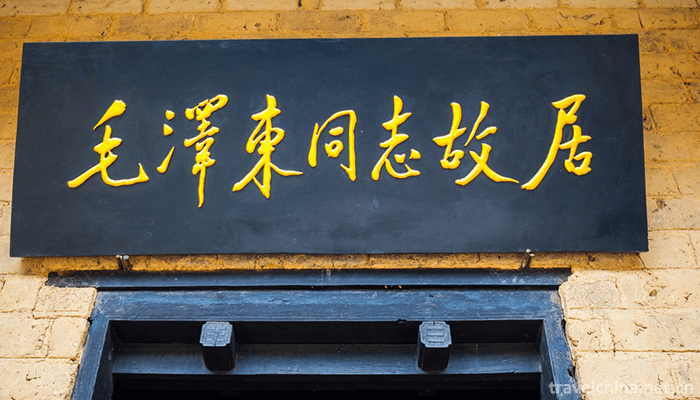

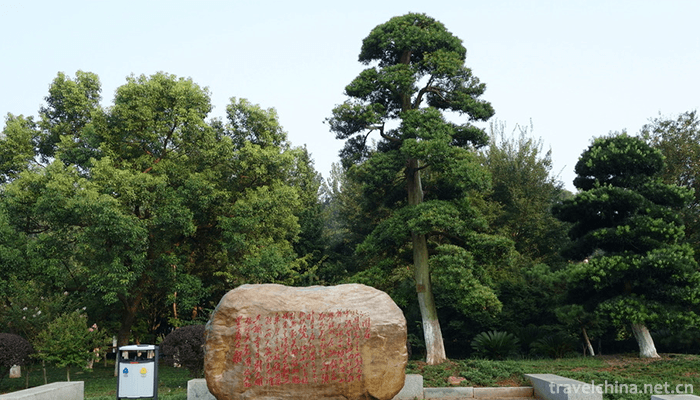
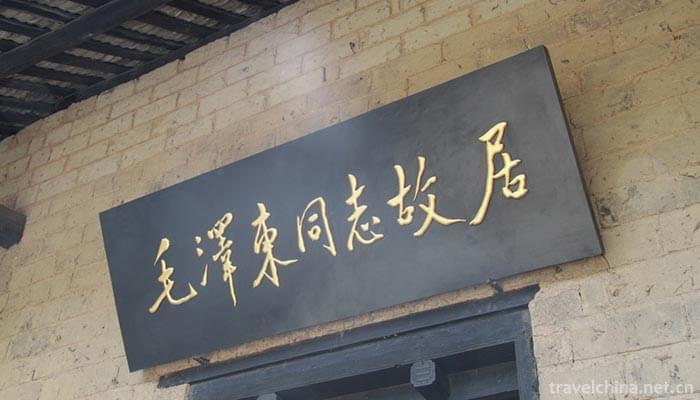
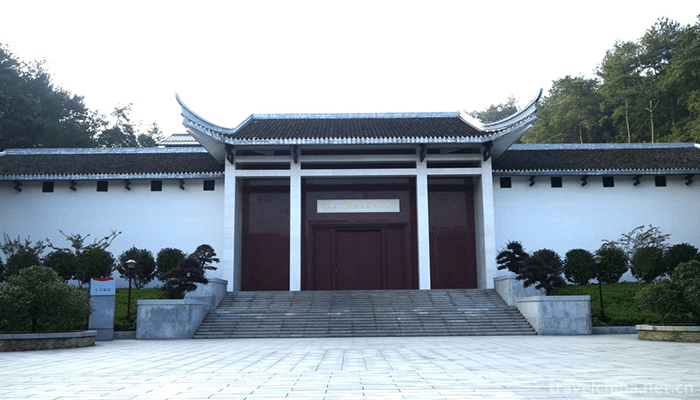
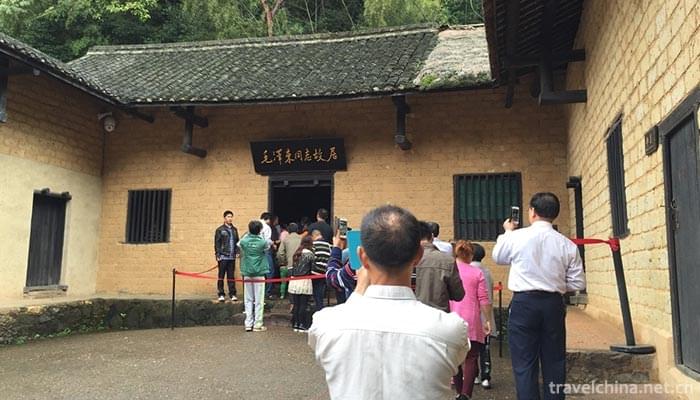
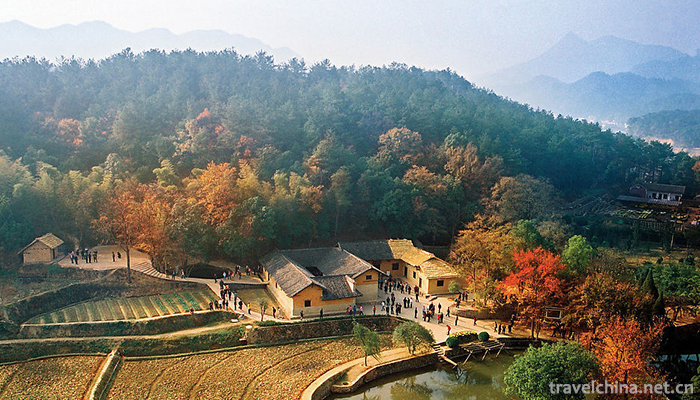
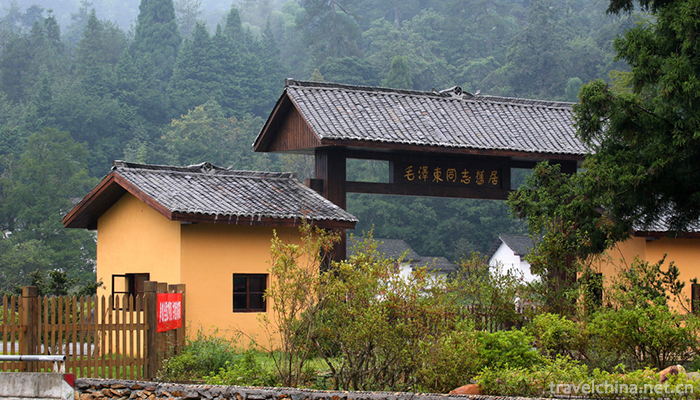
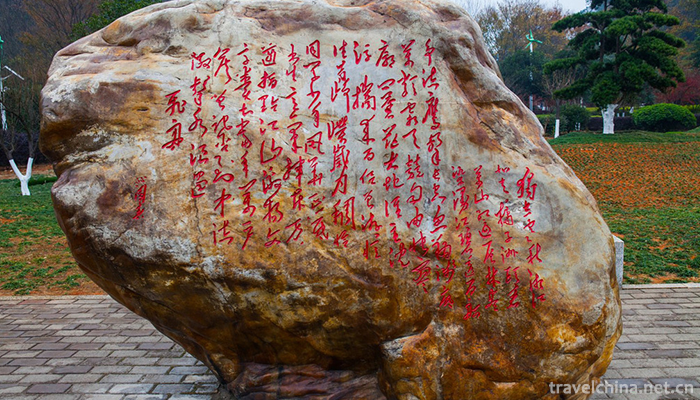
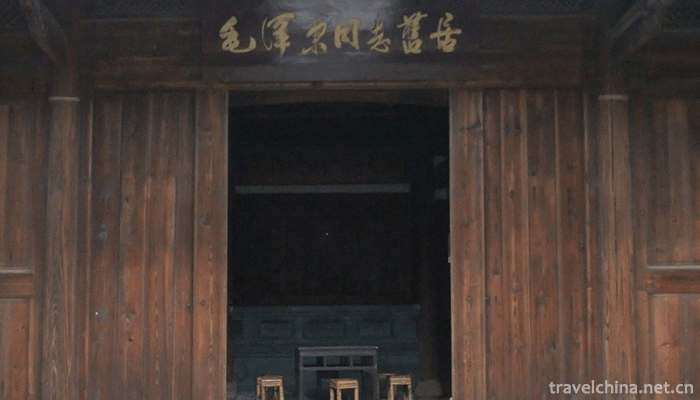
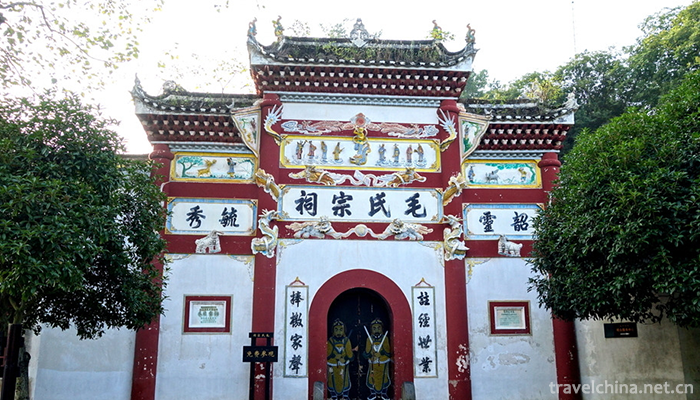

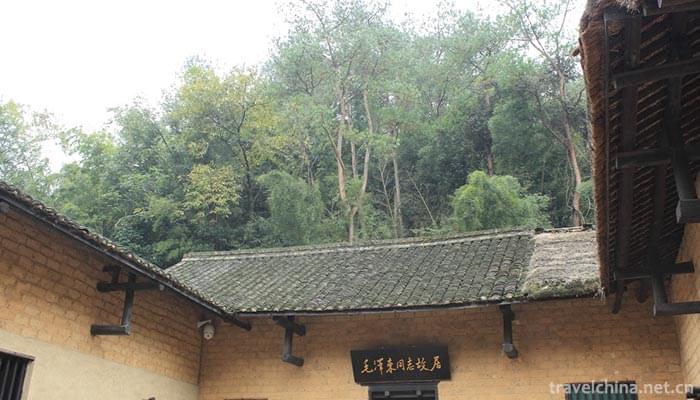
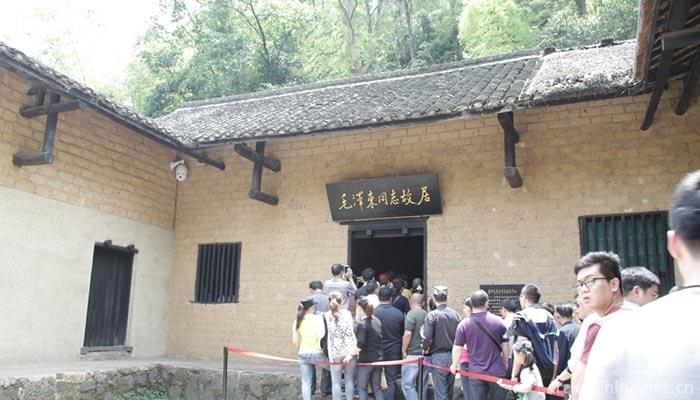
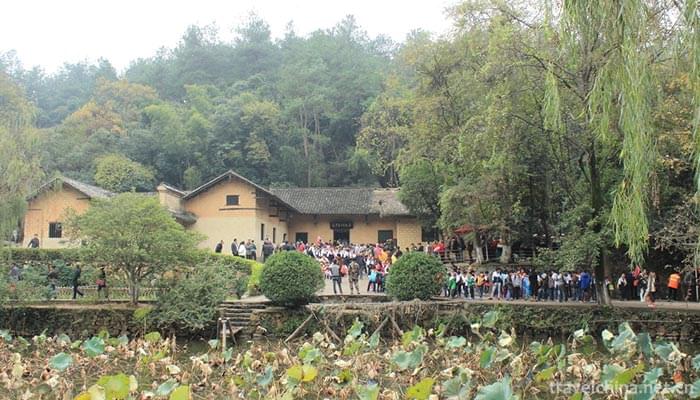
0 Questions
Ask a Question
Your email address will not be published.